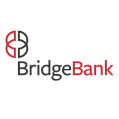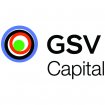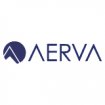
Software as a Service (SaaS) is having its moment. Customers, entrepreneurs, and capital markets are all enamored with the SaaS model– with good reason. For customers, software as a service can yield dramatic reductions in total cost of ownership, quicker time to value, and pricing models which let you pay for only what you need and as you go versus all up-front. For entrepreneurs, the recurring nature of subscription pricing gives more forward revenue and cash flow visibility, enables new customer acquisition models (such as Freemium), and the single code base for all customers is significantly easier to support than custom installs on-premise or supporting multiple generations of packaged software releases (and the Operating Systems they run on.) Investors love the predictable revenue, high margins and high growth rates. This love affair with the SaaS model is likely to continue for a very long time. The vast majority of business software is still custom and/or on-premise license based, so there is more than a decade of disruption and growth ahead.
When we dive one fathom deeper into the SaaS model, however, we quickly discover that there is not one single model but at least three very distinct Go-To-Market archetypes. At one end of the spectrum are the high-volume, low priced offerings such as Dropbox, Evernote, and Cloudflare that often deploy Freemium models, providing value to millions of individual users at no charge and converting some small percentage of them to premium paid accounts. Workgroup collaboration and social/viral features are often built in to these products to help turbo-charge organic growth and online acquisition characterized by self-service signup and setup. There are many entrepreneurs and investors who believe the whole point of SaaS is to get away from expensive direct selling in favor of these “self-service” models. As an example, I was recently asked by an entrepreneur if I was in the “pro-sales or anti-sales camp.” I am pretty sure they were referring to the need for salespeople, not sales themselves. For the record, I like sales very much.
At the opposite end of the spectrum are sophisticated enterprise offerings such as Workday, Veeva and Castlight Health that are used by large enterprises and can justify pricing of millions of dollar per year. There solutions are usually sold by experienced field sales teams, skilled in solution selling and navigating long and complex sales cycles. These products are feature rich in terms of end-user capabilities but also in terms of security, administration and ability to integrate with legacy systems.
In the middle are solutions that usually charge tens of thousands of dollars to low hundreds of thousands per year and are sold largely over the phone by an inside sales team and can be reasonably configurable. Customers may be medium sized companies or departments or business units of larger companies. Examples of this model are Salesforce, Netsuite, Hubspot, and Smartling.
So which of these three models are best? Is there one “just right” answer as there was for Goldilocks? Or do we take the Three Bears perspective that as long as you line up the size of the chair, temperature of the porridge and firmness of the bed with the needs of your target market, all three models can be equally successful. Clearly the latter, as one can point to several highly successful billion dollar market cap SaaS providers deploying each of the three models. The key is to line up product/market fit, sales and support, and price in a consistent and appropriate fashion.
It should be noted that it is possible to expand across models over time, such as Salesforce.com who both sells over the phone to mid-market customers and also deploys a field sales teams to sell bigger deals to large enterprises. Another example is Box.com which can be used by individuals, small teams, and large enterprises with pricing, feature sets and support options appropriate to each tier.
But what happens when the product, Go-To-Market strategy, and price are misaligned? Here are the most common mistakes we tend to see:
Market too small or product too narrow for Freemium: Free is a very compelling price, especially when trying to entice consumers to try something new, and this model can certainly lead to lots of users relatively quickly. However, employing this model in too small a market or with a product that lacks broad appeal faces the problem of there not being enough “top of funnel” free users from which some single digit percentage (typically) will convert to paying users to grow a sustainable business. In B2B markets free can be a red herring as there ought to be enough ROI (return on investment) enjoyed by customers using your product, such that they will happily pay at least some minimal monthly payment. Those business customers that don’t see such value likely won’t remain engaged over the long term as free users anyway. Switching to a paid-only offering, perhaps with a brief free trial period or money back guarantee, can be an accelerant to SaaS companies if they make the change early enough to avoid the messiness of taking away a free service from your early adopters. Some interesting case studies of SaaS offerings that saw their businesses grow rapidly when they dropped Freemium can be found here and here. Even large SaaS companies in big horizontal markets such as DocuSign and 37Signals have greatly downplayed their free versions over time, in some cases removing them from the pricing pages of their websites, though customers can still find these free options offered if you search a little.
Underpowered and underpriced for large enterprise: We sometimes see impressive Fortune 500 logos on a customer list only to discover that the price points and deployments are quite modest. These customers were acquired via heroic in-person selling efforts by the Founders and below market price points for non-strategic use cases. The hope is usually that this will catalyze “land and expand” proliferation, but unfortunately oftentimes the product is not sophisticated enough to deploy enterprise-wide or the sales team is incapable of selling at a price point that can ultimately sustain field sales efforts or a product roadmap necessary to serve large enterprise accounts. While these “lighthouse” accounts are meant to serve as references upon which future inside sales efforts can draw credibility, the fundamental problem space can sometimes be too complex for effective phone sales to customers of any size. Aria Systems is a SaaS subscription billing provider that serves large enterprises and has found that to truly handle the needs of core business units within Fortune 500 customers requires a field sales team, sophisticated product feature sets, high touch support, and price points that can sustain such service levels. Aria has left the opposite end of the market, serving small developers with an inexpensive and simple online billing service, to competitors that are better tuned to the broad low-end of the market and cannot compete with Aria for the narrower high-end of the market.
Overbuilding for long tail markets: The opposite mistake from that just mentioned is trying to serve long tail markets with a product too complex and expensive for widespread appeal, leaving oneself vulnerable to much simpler, cheaper, easier to use products. This is particularly true when marketing to developers where “cheap and cheerful” is more than adequate for most applications. Stripe and Twilio have done a nice job of providing appropriately simple developer-centric solutions at the low ends of their respective markets, payments and voice/messaging services, stealing this opportunity from incumbent providers who were too expensive, too complicated, and too hard to do business with.
Too many flavors all at once: While true that established vendors like Cornerstore OnDemand and Concur can serve the spectrum from small business up to global enterprise, generally young startups lack the resources to serve multiple audiences at once. Those that allow themselves to be pulled thin in multiple directions find they serve no segment particularly well and have cost structures that are unsustainable. Better to nail one of the three basic models and let the market pull you emphatically up or down market as a means of successful expansion. When are you ready to broaden?
My advice is to wait until you are sure that you are sufficiently up the Sales Learning Curve, that you are sure you can recoup your paid sales and marketing expenses in an appropriately short timeframe (usually a year or less) given your particular customer churn rate, margin profile and price points. Once you are happy with your Customer Acquisition Costs (CAC) Payback period, you can respond to market signals pulling you up or down market. Likewise, I recommend making sure that your product is optimized for easy onboarding and support of the mid-market before adding sophisticated enterprise features to go upmarket or your development team may be overwhelmed and your user experience compromised. In general there seem to be more examples of moving up market than down market. It is fundamentally easier to add features and sales people to serve more sophisticated needs up market than to make a product simpler and master indirect channels to go down market. When cooking porridge you can add salt, sugar and spice, but is much harder to take them away.
It’s a great time to build, buy or invest in Software-as-a-Service. Recognizing that there are multiple, distinct Go-To-Market models, each equally valid in the right circumstances, enables a clear-eyed and internally consistent strategy that avoids the mistakes describe above and captures the high level benefits of SaaS.
 Note: Companies in italics are Venrock portfolio companies.
Note: Companies in italics are Venrock portfolio companies.
Check out Brian’s articles here at AlwaysOn and at VC Waves.
“Three Chairs” photo by Santhosh Kumar from Shutterstock.











Leave a Comment
Your email address will not be published. Required fields are marked *